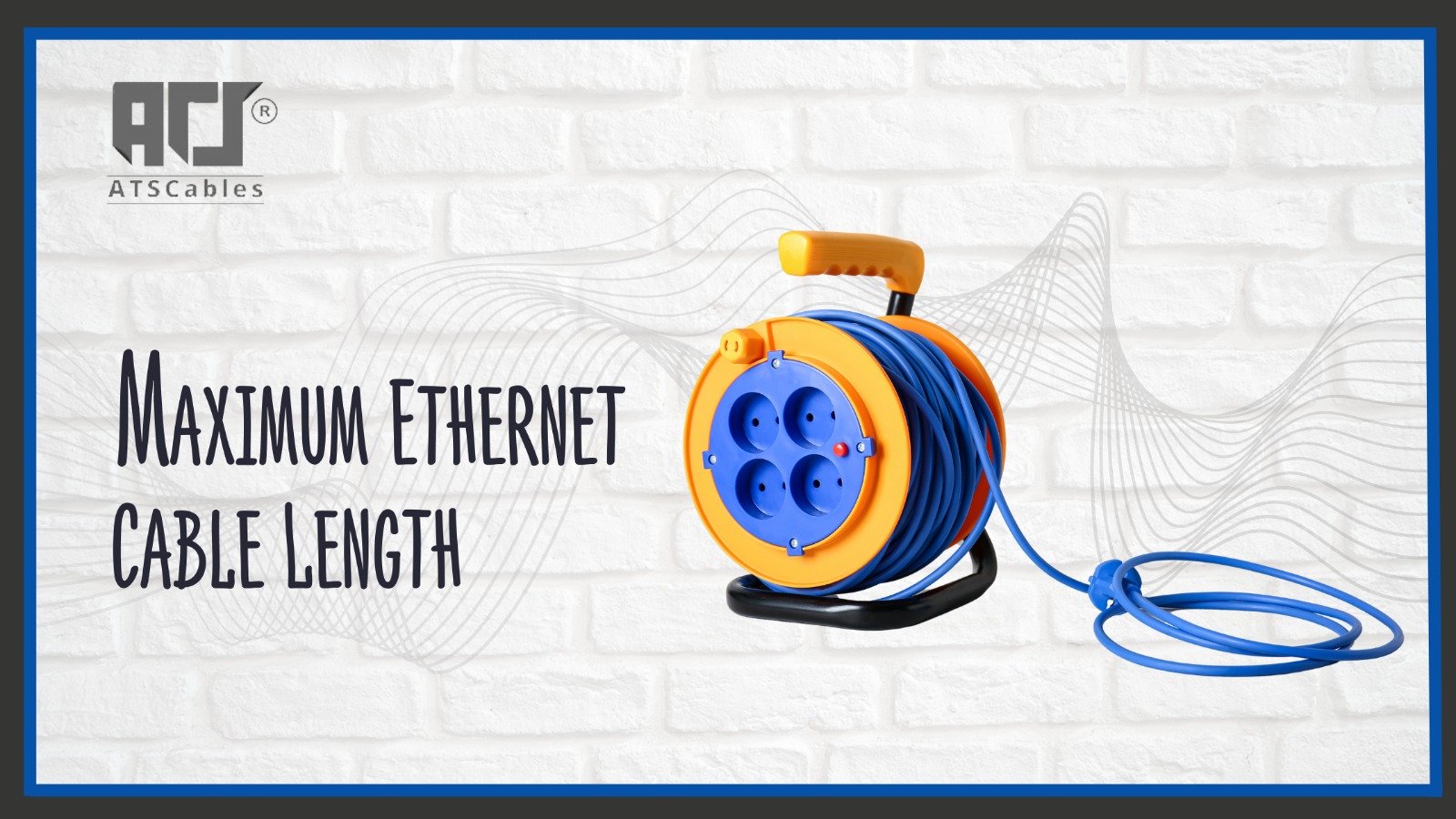
A Guide to Ethernet Cable Categories and Length Limits
Ever wondered how long can an ethernet cable be before it starts causing problems? Whether setting up a home network or running cables across an office, understanding the ethernet cable length limit is key to keeping your connection strong. Go too long, and performance suffers.
Go too short, and you might not reach where you need to. This guide breaks down everything you need to know about the maximum ethernet cable length, ethernet cord lengths, and the best choices for different setups.
Understanding Ethernet Cable Categories
Not all cables are built the same. Different categories offer varying speeds, shielding, and ethernet max length. Here’s a breakdown:
- Cat5e is an affordable and reliable option, and the max length is 328 feet (100 meters).
- Cat6 handles higher speeds with less interference with cat6 max length is also 328 feet, but performance drops after 165 feet.
- Cat6a comes with enhanced shielding that supports 10Gbps.
- Cat7 has superior shielding, and 50 FT cat7 ethernet cable reduces crosstalk and interference.
- Cat8 is designed for high-performance setups.
The selection of appropriate cables depends entirely upon specific requirements. To achieve signal integrity when using long ethernet cables you should select shielded designs such as Cat6a or Cat7. The following table presents an extensive view of ethernet cable categories and their key features:
| Category | Speed (Max) | Bandwidth (Max) | Distance (Max) | Shielding Options | Applications | Notes |
| Cat5 | 10 Mbps | 100 MHz | 100 meters (328 feet) | UTP | Older installations not recommended for new deployments | Outdated, limited speed |
| Cat5e | 100 Mbps | 100 MHz | 100 meters (328 feet) | UTP | Older installations, basic networking | Improved over Cat5, but still outdated |
| Cat6 | 10 Gbps | 250 MHz | 55 meters (180 feet) | UTP/STP | Home networks, small office networks, gaming | Good balance of speed and cost |
| Cat6a | 10 Gbps | 500 MHz | 100 meters (328 feet) | UTP/STP | Larger networks, data centers, high-bandwidth applications | Longer distance at 10 Gbps than Cat6 |
| Cat7 | 10 Gbps | 600 MHz | 100 meters (328 feet) | STP | High-speed networking, data centers, demanding applications | Shielded for better noise reduction |
| Cat7a | 10 Gbps | 1000 MHz | 100 meters (328 feet) | STP | High-speed networking, data centers, demanding applications | Higher bandwidth than Cat7 |
| Cat8 | 40 Gbps | 2000 MHz | 30 meters (98 feet) | STP | Data centers, server rooms, high-bandwidth applications | Designed for very high speeds over shorter distances |
Key Considerations to note about this table:
- Speed is the maximum data transfer rate the cable can support.
- Bandwidth is the frequency range the cable can transmit, affecting the amount of data that can pass through.
- Distance is the maximum length the cable can run while maintaining signal integrity.
- Unshielded Twisted Pair (UTP) is common, while Shielded Twisted Pair (STP) is used in environments with electromagnetic interference.
- Applications are the common uses for each cable category.
Ethernet Cable Length Limits and Performance
The ethernet cable’s maximum length affects speed and reliability. Here’s what you need to know:
- 328 feet (100 meters) is the standard max length of ethernet cable before requiring signal boosters.
- 165 feet (50 meters) is optimal as the performance of cat6 max length drops after this distance.
- 98 feet (30 meters) is the maximum range for top-speed transmission on cat6e max length.
- A 20-foot ethernet cable or 50-foot ethernet cable cat6 offers peak performance without signal loss.
- A 200ft ethernet cable or 300 ft ethernet cable may need extenders or repeaters.
For the best network performance, avoid exceeding the ethernet cable distance limit unless using signal-boosting solutions.
Factors Affecting Cable Performance
Even within the maximum length for ethernet cable, several factors impact quality:
- Crosstalk and Interference: Ethernet 26g crosstalk spec ensures better signal protection in shielded cables.
- Material Quality: A 500-foot ethernet cable made of pure copper performs better than a cheap alternative.
- Environment: A 50-foot network cable exposed to extreme temperatures may degrade faster.
- Bends and Twists: Keep cables as straight as possible to avoid weakening the connection.
Conclusion
Stability in connections arises from selecting appropriate cables together with observing maximum ethernet cable length recommendations. Select high-quality network cables when choosing between cables of 100 feet in length or 12 feet in length to achieve maximum performance.
Need reliable cables? Searching for Ethernet solutions shouldn’t be a problem as ATS Cables is here to provide you with top-notch cables for your high-quality connection needs.
Frequently Asked Questions
What is the max length of the RJ-45 cable?
The standard max length of RJ-45 cable is 328 feet (100 meters) before signal degradation begins.
How far can an Ethernet cable be run without losing speed?
Up to a maximum network cable length of 328 feet for Cat5e and Cat6. Beyond this, extenders are required.
Can I use a 50-foot CAT6 cable for gaming?
Yes, a 50-foot CAT6 ethernet cable works well for gaming as long as the quality is good.
What is a patch cord?
A patch cord is a short Ethernet cable used to connect devices like modems and switches.
How long should an Ethernet cable be for the best speed?
The shorter, the better. A 30-foot LAN cable or 40 FT network cable maintains top speeds.
keep connected
Get updates by subscribe our weekly newsletter

